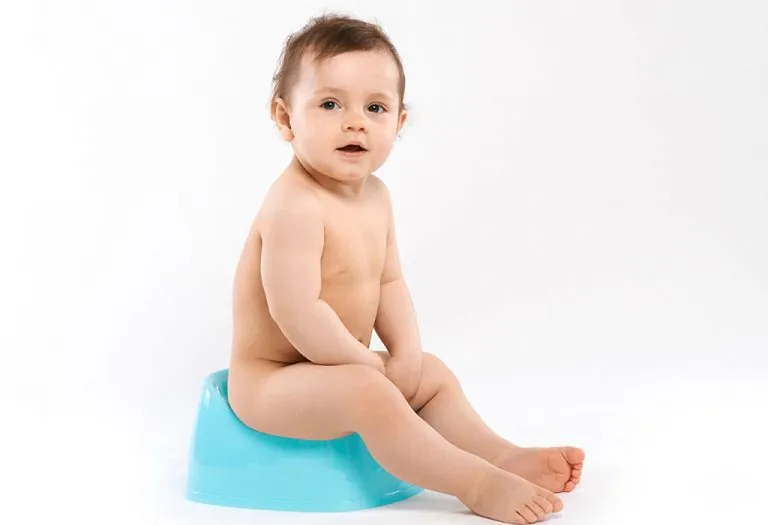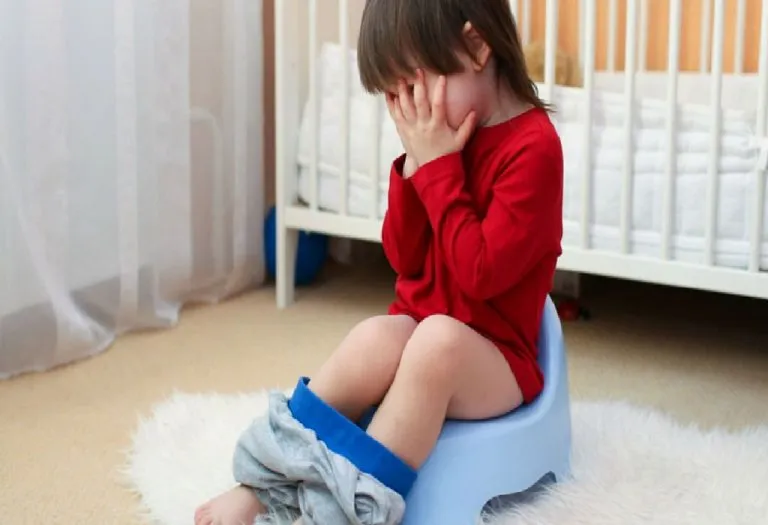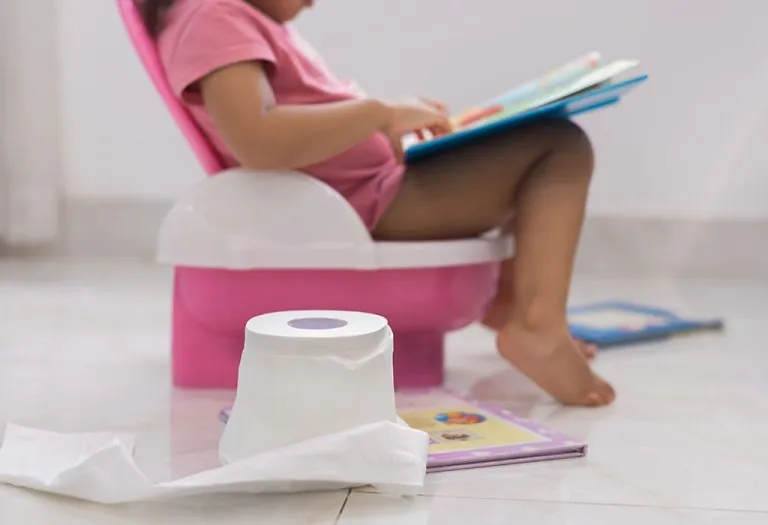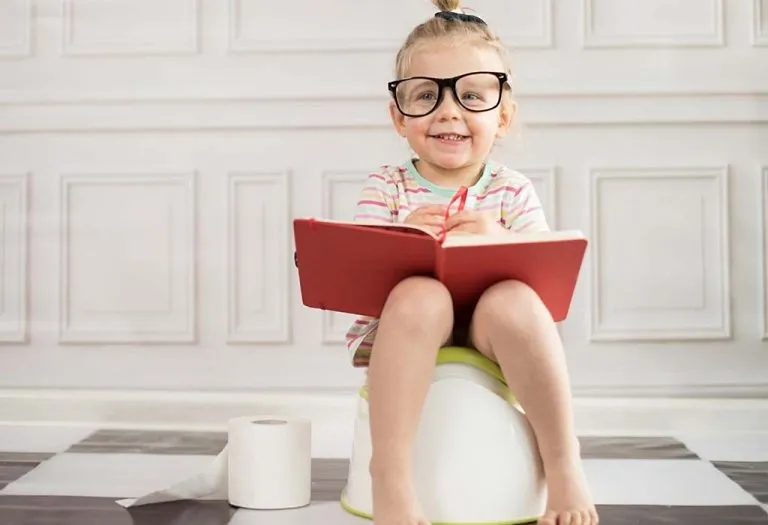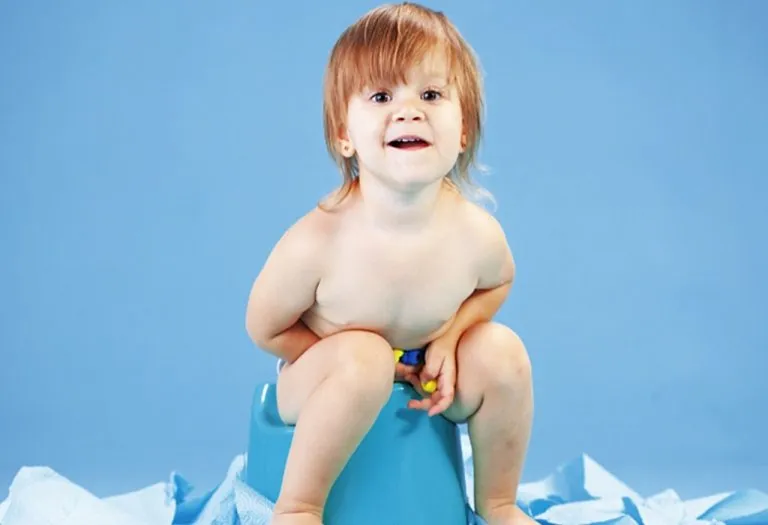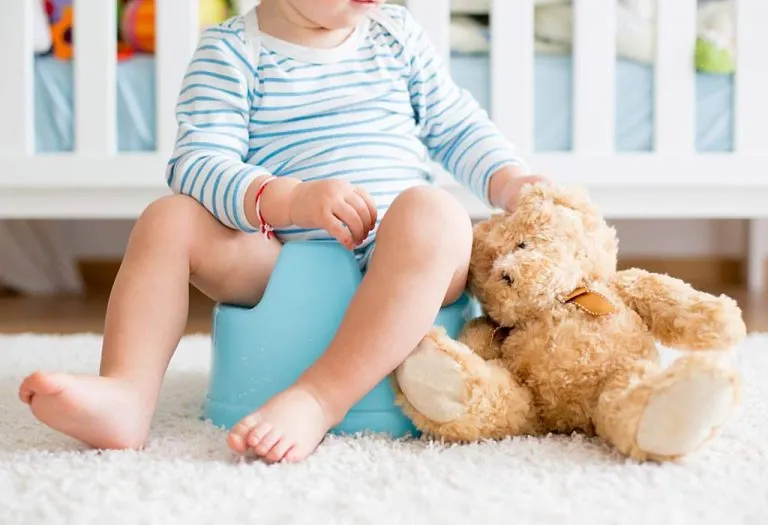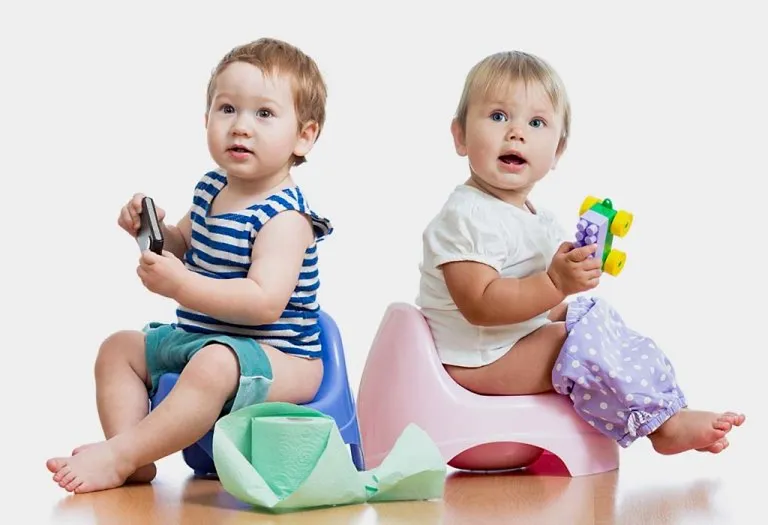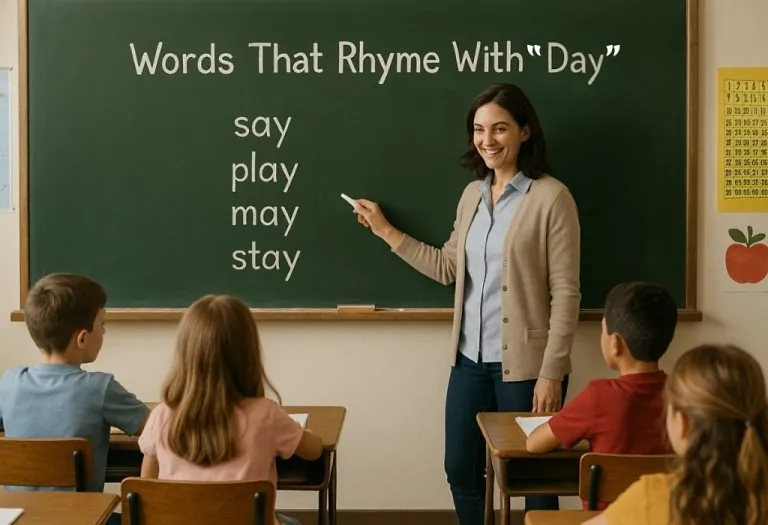Potty Training Boys – Tips, Dos and Don’ts

- What Is Potty Training?
- When to Start Potty Training for Boys?
- Signs of Potty Training Readiness for Children
- How to Potty Train a Boy?
- How Long Does It Take?
- Potty Training Tips for Boys
- Dos & Don’ts While Potty Training Boys
- FAQs
Someone has very rightly said, ‘Having a kid is like continually having to clean up after a party you didn’t attend,’ and that clean-up starts with diaper duties! Although most potty training tips are common for boys and girls, training boys to use potty seats is a little more challenging. Potty training boys requires patience, consistency, and a good strategy to make the process smoother for both parents and toddlers. One of the most common questions parents ask is, ‘How to start potty training a boy?’ The key is to introduce the concept gradually. With the right approach, your little one will soon be diaper-free!
What Is Potty Training?
The process of training little children to use the toilet for peeing and pooping is what potty training is all about (1). As babies, children are used to diapers. But as they grow into toddlers, it is important to train them to use toilets, and this must be done at the right age.
Potty training doesn’t start with making children use toilets right away. They learn to do that gradually. The complete phase of transitioning from diapers to using proper toilets is called potty training. So, here is a systematic guide that clearly states all the dos and don’ts of potty training boys.
When to Start Potty Training for Boys?
There is no definite time defined by any expert to start boy potty training. The average age to potty train a boy has been roughly put around 18 months to 3 years old, and there may also be some children who are receptive to potty training only when they are close to 4 (2). But before you start, you must look out for certain signs that will indicate that the child is ready.
Signs of Potty Training Readiness for Children
To make it easy for new parents, experts have put together some definite signs to look out for before you start making plans to potty train their kids These signs of potty training readiness have been categorised into physical, behavioural and cognitive signs (3).
- Physical signs: Firstly, you may want to check if your baby boy is physically developed enough to walk. You may also want to wait till your baby pees a fair amount at one go and also has a well-formed bowel movement at a foreseeable time. Also, having a dry time of at least 2 to 3 hours or so during nap time will come very handy while making your plans around potty training your son.
- Behavioural Signs: You need to wait until your baby can sit quietly in one place for at least five minutes. He should also be able to pull his pants up and down on his own When a child starts disliking the feeling of being in a wet diaper or starts giving physical or verbal signs of bowel movement, it is a good indication to start with potty training. Also, if you observe him showing an interest in other’s bathroom habits, it is time to chalk out a plan to help him form his own. Other important behavioural traits include demonstrating a desire for independence, taking pride in his accomplishments and being cooperative.
- Cognitive Signs: The following cognitive development milestones are also important while potty training a 2-year-old. The child should be able to understand physical signals and should also be able to give signals themselves whenever necessary. Being able to follow simple and straightforward instructions is another cognitive development milestone that is necessary before starting any training at all. Experts also emphasise that learning to tidy up their toys is more important for children than learning to keep themselves clean. They should also have some code word for stool and urine which they can use to communicate whenever they must pee or poop.
The signs mentioned above can help parents to determine the potty training age for boys.
How to Potty Train a Boy?
Potty training a toddler boy requires a lot of patience, as they often stay in diapers longer than girls. If you’re wondering about the best way to potty train a boy, the following tips will guide you through the process (4).
1. Choose the Right Age to Start
Age plays a huge role in successful potty training. Start when your son is physically and emotionally ready—some boys may be ready by age 2, while others may need until after their third birthday. Forcing training too early can lead to setbacks, so wait until he shows signs of readiness.
2. Avoid Major Life Changes
If your toddler is coping with changes like a new sibling, starting daycare, or moving, delay potty training until he adjusts. Introducing too many changes at once can make the process stressful.
3. Start with a Small Potty Seat
Begin by teaching your boy to poop and pee in a child-sized potty seat. Let him get comfortable sitting on it fully clothed first, then gradually transition to using it without diapers.
4. Create a Consistent Potty Training Plan
Before starting, decide on a structured approach—when to begin, how to handle accidents, and when to take breaks if needed. Consistency is key, so ensure all caregivers follow the same routine.
5. Use Positive Reinforcement
Praise and rewards (like stickers or small treats) can motivate your child. Avoid punishment for accidents, as this can create anxiety around potty training.
6. Seek Advice from Experts
Consult your child’s pediatrician or daycare provider for tips. Their experience can help tailor a plan that suits your son’s needs.
7. Be Patient with Nighttime Training
Daytime potty training is usually easier than nighttime. Staying dry overnight takes longer, so use training pants and limit liquids before bedtime.
8. Demonstrate Proper Technique (For Standing Up)
Once your boy masters sitting, teach him to pee standing up. Use targets (like cereal pieces in the toilet) to make it fun and encourage aim.
9. Expect Regression and Stay Calm
Progress isn’t always linear—some boys regress due to stress or distractions. If this happens, take a break and try again later.
10. Celebrate Small Successes
Every step forward is progress! Celebrate milestones to keep your child excited about using the potty.

How Long Does It Take?
Potty training boys typically takes 3 to 6 months for daytime control, though some may learn faster while others take longer. Nighttime training often extends beyond this, sometimes up to age 5 or older, as staying dry overnight depends on bladder maturity. Factors like temperament, parental consistency, and whether he’s coping with other changes (e.g., a new sibling) can affect timing.
Potty Training Tips for Boys
As parents, it is important to be fully prepared to help the baby achieve each milestone with confidence. These toilet training ideas will help you to get over this phase of your child’s development without much hassle (5).
- Children love to imitate. Hence, the best way to potty train a boy is to let him observe his daddy using the toilet when peeing. Very soon he will be intrigued and would like to try it out himself.
- It is important to go about the training step by step. Experts suggest that it is always helpful to train the child to go potty in a child-sized potty where he can sit comfortably, and his legs touch the ground. This will also give him a sense of possession, and he may just think of it as a new toy where he can poop peacefully. This needs to be followed if you are starting as early as 18 months old. However, if you start the training at the age of 3 or older, then you can just buy a comfortable adapter seat for your toilet. In this case, though, you will also have to put a footstool in front of him, so that he sits comfortably without his legs dangling. This will also come in handy to get on and off the potty easily and independently.
An extra piece of advice is to buy a potty seat without a urine guard.
- The next phase is to help the child get comfortable with the potty. Create a sense of possession for the potty seat in your child. Write your boy’s name on it or even decorate it with some stickers. Let him playfully sit on it for a week or so before you suggest that he takes his pants off and sits on it. You can also do a role-play on how to use the potty seat. Use his favourite stuffed doll or animal toy for demonstration. This makes the whole process of potty training enjoyable for him and easier for you.
- Motivate your child to become like his dad or elder brother. Tell him that he can choose his favourite underwear and wear it like his father and brother do. If he is initially uncomfortable, let him try wearing them on top of the diaper. Slowly he should be willing to ditch the diaper and wear only underwear.
- Setting up a training schedule based on your personal schedule and your son’s time table is very important. If your son goes to a daycare or pre-school, do share your potty training strategy with them. Since your son will take his own time to learn, keep some diapers and disposable pants handy for night time and travel.
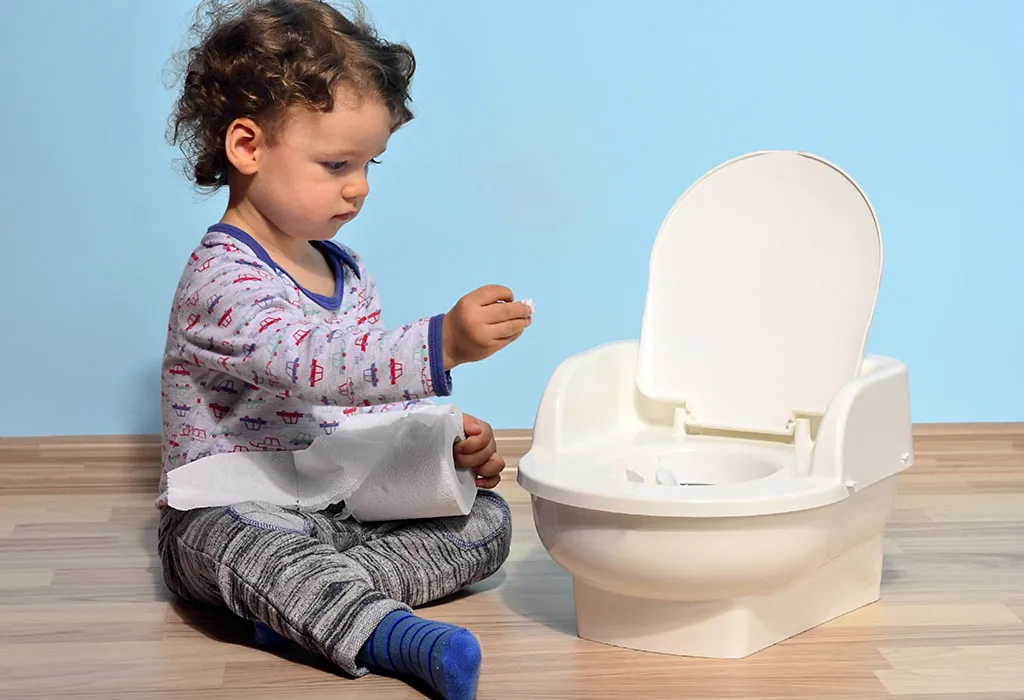
- Bowel movements and the tendency to urinate usually come at the same time. Hence, it is advisable to make your son sit first. Avoid making him sit for too long as he will avoid trying it from very next time. Once your son starts pooping and peeing in a sitting position, teach him how to stand and pee. Once again, a demonstration from daddy will be helpful. You can also float some oval-shaped object for target practice, but please remember that should be your last resort as it can become very messy.
- Around the time he usually has bowel movements, take off his pants and let him be for some time. Keep the potty seat handy so that as soon as you see the signs you can make him sit on it.
- Celebrate each success by rewarding him with stickers or stars. That will keep him inspired. If you don’t succeed the first time, do try repeatedly till you get there; but remember to do so with lots of love, patience, innovation and positive reinforcement. You can also buy him picture books and cartoon CDs around potty training and let him watch them. They are usually fun, and children love watching and learning from them.
- Once your baby boy has learned to stay dry all day, it is time to move to night-time training. This will take a longer time as it will require him to hold his urine for a certain period. If your little boy wants to sleep without diapers, let him do that. A few days will be experimental, and he may wet the bed, but slowly he will learn to wake up for peeing and then eventually will hold his urine for the rest of the night. This training may take weeks or even months.
Dos & Don’ts While Potty Training Boys
The above-mentioned potty training steps will clear any doubts that new parents may have about toilet training boys. Here are some dos and don’ts to summarise what we have discussed so far.
Dos:
- Show a lot of patience
- Look out for physical, behavioural and cognitive signs before you start
- Take valuable tips from his preschool teachers or daycare providers before chalking out a plan
- Make it fun and motivational by trying out various innovative methods. Get books and CDs around it and let him watch. Also, celebrate each achievement by rewarding him
Don’ts:
- Don’t push him or constantly insist once you start
- Do not try to achieve all levels at one go
- Do not chide him or compare him to someone else
- Do not show any signs of frustration. That will make him regress
FAQs
1. Can a boy potty train standing up without sitting first?
While most experts recommend starting with sitting (to avoid confusion between pooping and peeing), some boys successfully learn to pee standing up from the beginning. However, this approach may delay bowel training since sitting is still needed for pooping.
2. Do boys who start potty training later take longer to learn?
Not necessarily. While earlier starters (around age 2) may take longer overall, boys who begin closer to age 3 often grasp the concept faster due to better physical and cognitive readiness. The key is starting when your child shows signs of readiness.
3. Should you avoid public restrooms during potty training?
Some parents worry about germs or their child’s fear of loud flushes, but avoiding public toilets can hinder progress. Instead, carry a foldable travel seat or let him practice standing (if he’s trained that way) to build confidence in different settings.
4. Is there a link between potty training and future bedwetting?
No evidence suggests that early or late potty training causes bedwetting—it’s usually tied to genetics or deep sleep patterns. However, pressuring a child or punishing accidents can create anxiety, which may contribute to delays in nighttime dryness.
Nothing about parenting is a cakewalk, but we hope the potty training tips for boys, penned down in detail in this article, will help young parents to get over this patience-testing time easily.
References/Resources:
1. American Academy of Pediatrics – Potty Training
2. Mayo Clinic – Potty training: How to get the job done
3. C.S. Mott Children’s Hospital – Potty Training
4. Johns Hopkins Medicine – Toilet Training
5. Cleveland Clinic – How To Potty Train: Our Best Tips
Also Read:
Potty Training Chart
Potty Training for Girls
Potty Training Methods
3-Days Potty Training Method
Oh Crap Potty Training Method
Was This Article Helpful?
Parenting is a huge responsibility, for you as a caregiver, but also for us as a parenting content platform. We understand that and take our responsibility of creating credible content seriously. FirstCry Parenting articles are written and published only after extensive research using factually sound references to deliver quality content that is accurate, validated by experts, and completely reliable. To understand how we go about creating content that is credible, read our editorial policy here.







